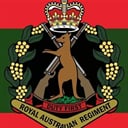Which river flows through Adelaide, the capital city of South Australia?
The River Torrens is the most significant river of the Adelaide Plains. It was one of the main reasons for the siting of the city of Adelaide, capital of South Australia. It flows 85 kilometres (53 mi) from its source in the Adelaide Hills near Mount Pleasant, across the Adelaide Plains, past the city centre and empties into Gulf St Vincent between Henley Beach South and West Beach. The upper stretches of the river and the reservoirs in its watershed supply a significant part of the city's water supply.
At its 1836 exploration by William Light, an inland bend was chosen as the site of the Adelaide city centre and North Adelaide. The river was first named the 'Yatala' by the initial exploration party, but later renamed to honour Robert Torrens senior, chairman of the board of 'Colonisation Commissioners for South Australia' from 1834 to 1841.
Since European settlement the river has been a frequently touted tourist attraction. The river's long linear parks and a constructed lake in the lower stretch are iconic of the city. The river's flora and fauna have been both deliberately and accidentally impacted since settlement. In the 19th century, native forests were cleared, gravel removed for construction and many foreign species introduced. With construction of the linear parks, many species native to the river have been replanted, and introduced species have been controlled as weeds.
More Info:
en.wikipedia.org


